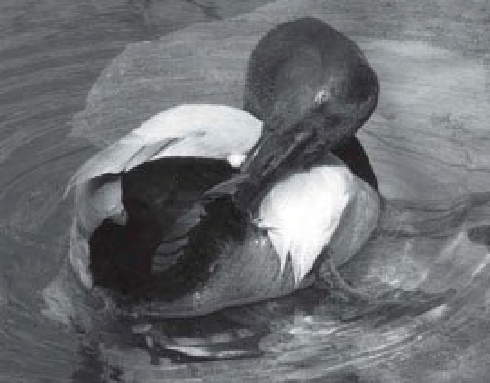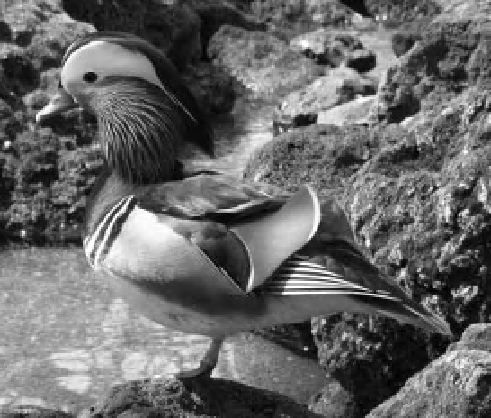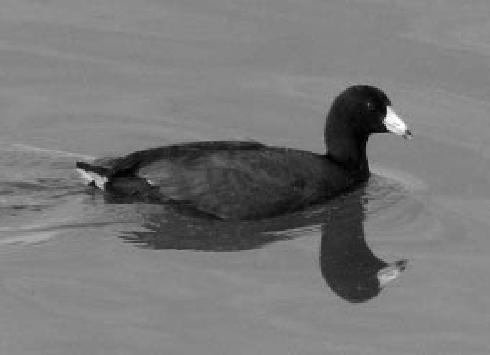Geoscience Reference
In-Depth Information
A
B
Figure 7-27.
The Mandarin duck (
Aix galericulata
)
drake is among the most colorful and beautiful of all
birds (see Color Plate 7-27). Native to eastern Asia, it
breeds in eastern Siberia, China and Japan, and
winters in southern China and Japan (Harris 2009).
Photo by J.S. Aber.
Figure 7-26.
Diving ducks (see Color Plate 7-26). A.
Redhead (
Aythya americana
) drake. Redheads usually
feed at night and rest during the day. B. Canvasback (
A.
valisineria
) drake; note the long bill and large webbed
feet. Both are native to North America. Photos by J.S.
Aber.
then migrate into the southern United States for
winter (Niering 1985). The Canada goose is a
familiar sight in all U.S. states and Canadian
provinces, especially in spring and fall when
l ocks migrate in characteristic V-shaped forma-
tions. They vary signii cantly in size with large
and small races or subspecies (Fig. 7-30; Niering
1985). They are highly tolerant of people, and
their numbers have increased dramatically in
recent years (Maccarone and Cope 2004).
The black swan (
Cygnus atratus
) inhabits
lakes, rivers, and swamps in southern Australia
and Tasmania (Fig. 7-31). It uses its exception-
ally long neck to reach submerged aquatic veg-
etation and insects. It has been exported to New
Zealand, Europe and North America; in Europe
Figure 7-28.
An individual American coot (
Fulica
americana
) slowly cruises along in search of aquatic
vegetation to eat. Photo by J.S. Aber; Lake Kahola,
Kansas, United States.
it has escaped into the wild ( Jackson 2009). Not
all geese are associated with wetlands, however.
The Cereopsis goose (
Cereopsis novaeholland-
iae
) of Australia and the Hawaiian Nene goose
(
Branta sandvicensis
), for example, are both
primarily land-dwelling birds.
Fishing birds include pelicans, cormorants,
the anhinga, several raptors, and penguins








